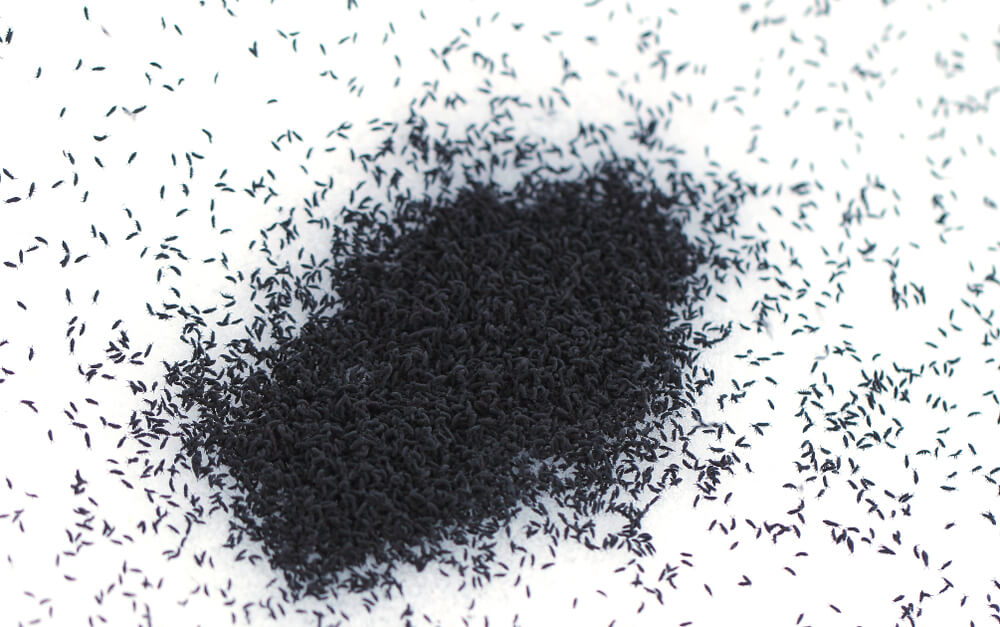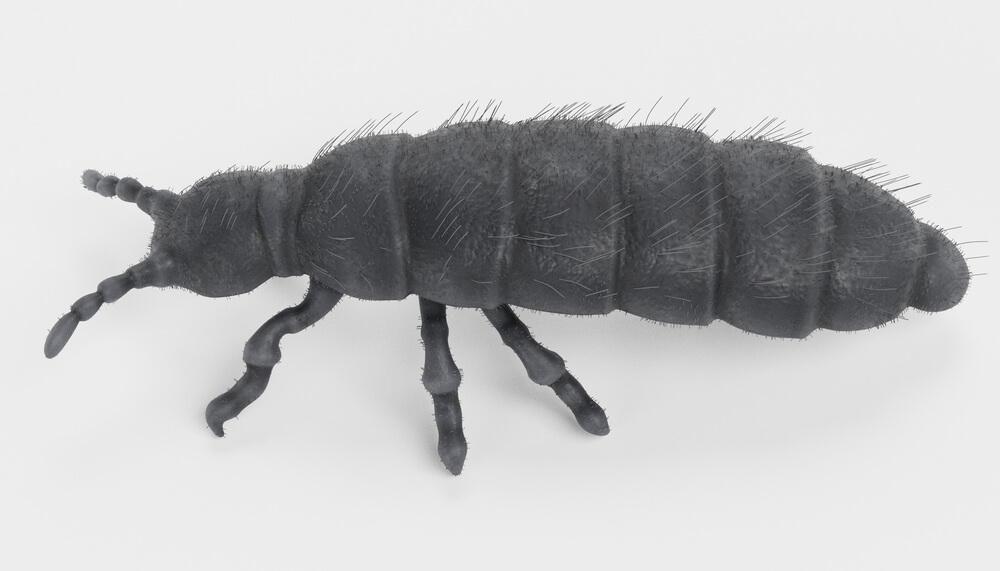Have you ever spotted tiny jumping insects in your house, especially in winter and early spring? Chances are, you might have encountered snow fleas, also known as springtails. These minuscule creatures, scientifically known as Hypogastrura nivicola, are not actually fleas, despite their name. Snow fleas are tiny arthropods that measure only about 1-2 millimeters in length.
These fascinating insects have the remarkable ability to survive in frigid temperatures as low as -5 degrees Celsius. They are commonly found in various environments, including forests, soil, and even on snow-covered surfaces. However, they can accidentally enter our homes through cracks, gaps, and other entry points.
While snow fleas do not pose any health risks or bite humans or animals, their presence in large numbers can cause concern. In this comprehensive guide, we will explore how snow fleas enter our homes, how to identify infestations, the potential dangers they may present, and effective methods to get rid of them. So, let's dive in and learn more about these tiny creatures invading our living spaces.
Table of Contents
What are Snow Fleas?
Snow fleas, also known as springtails, are tiny insects that belong to the arthropod family. Despite their name, snow fleas are not actually fleas. They are very small, measuring only 1-2 millimeters long. These little creatures have a unique ability to jump, much like fleas, which is how they earned their name.
Snow fleas can be found in various environments, including forests, soil, and even snow-covered areas. They are most commonly seen during the winter and early spring when the weather is cool and damp. These insects are incredibly resilient and can survive in temperatures as low as -5 degrees Celsius.
How Snow Fleas Enter Your House
Snow fleas can accidentally enter your home through various entry points. They are attracted to warmth and moisture, which makes our homes an ideal environment for them. Common entry points for snow fleas include gaps in windows and doors, cracks in the foundation, and even through firewood brought indoors.
Read More: 10 Best Essential Oils for Bruises: Natural Ways to Heal Quickly
Identifying Snow Flea Infestations
Snow fleas are not harmful to humans, pets, or houseplants. However, their presence in large numbers can be quite alarming. If you suspect a snow flea infestation in your house, look out for the following signs:
- Seeing tiny black insects jumping around on floors, countertops, or other surfaces.
- Noticing clusters of these insects near windows or doors.
- Finding them in damp areas, such as basements or bathrooms.
It's important to note that snow fleas are sometimes mistaken for other pests, such as fleas or bedbugs. However, snow fleas do not bite humans or animals, nor do they cause any health risks.
What Happens When a Snow Flea Jumps?
When a snow flea jumps, it can reach impressive heights relative to its size. These tiny insects have a unique tail-like appendage called a furcula, which acts as a spring mechanism. When they want to jump, they release the furcula, causing a sudden and rapid movement that propels them into the air.
Jumping allows snow fleas to escape potential threats or unfavorable conditions and helps them navigate their environment more efficiently. Considering their size, snow fleas can jump remarkable distances—up to 100 times their body length! This means that if a snow flea is roughly 2 millimeters long, it can jump up to 200 millimeters, or 8 inches, in a single leap.
The ability to jump is a means of transportation for snow fleas and a way to disperse and find new habitats. They use their jumping prowess to move between soil, leaf litter, and other damp environments where they thrive.
The Dangers of Snow Fleas
While snow fleas are harmless, they can still be a nuisance. Large numbers of snow fleas can create unsightly black clusters in your home. Additionally, if you have pets, they may get agitated by the presence of these tiny jumping insects.
Do Snow Flea Bites?
No, snow fleas do not bite. Unlike other insects, such as fleas or bedbugs, snow fleas cannot bite humans or animals. They are harmless creatures that primarily feed on decaying plant matter, fungi, and bacteria. So, if you come across snow fleas in your house, you can rest assured that they pose no risk of biting or causing any discomfort.
How to Get Rid of Snow Fleas?
If you find snow fleas in your house, there are several steps you can take to get rid of them:
- Start by vacuuming the affected areas thoroughly. Pay close attention to cracks, crevices, and areas where snow fleas tend to gather.
- Clean and dry any damp areas in your home, as snow fleas are attracted to moisture.
- Consider using diatomaceous earth, a natural powder that can help dehydrate and kill snow fleas. Sprinkle it in infested areas and leave it for a few days before cleaning.
- Some essential oils, such as peppermint or lavender oil, are known to repel snow fleas. Dilute a few drops in water and spray the mixture on the affected areas.
- If you have infested items that can withstand freezing temperatures, such as clothes or bedding, you can place them in sealed plastic bags and leave them in the freezer for a few days to kill the snow fleas.
- Pest Control Professionals: If the infestation persists or becomes overwhelming, it may be time to call the experts. Pest control professionals have the knowledge and equipment to handle and prevent snow flea infestations from your home effectively.
If your snow flea infestation persists or if you are dealing with a large number of snow fleas, it may be best to seek professional pest control assistance. They can provide comprehensive solutions to eliminate the infestation and prevent future occurrences.
Preventing Future Snow Flea Infestations
To avoid future snow flea infestations, follow these preventive measures:
- Seal any cracks or gaps in windows, doors, and foundations to prevent snow fleas from entering.
- Keep your home clean and dry, as snow fleas are attracted to damp areas.
- Store firewood outdoors and away from your house.
- Use a dehumidifier in areas of excess moisture, such as basements or bathrooms.
These preventive measures reduce the chances of snow fleas finding their way into your home.
Conclusion
Snow fleas may seem like a pest, but they are harmless to humans, pets, and your home. If you ever encounter these tiny creatures in your house, remember that they are more of a nuisance than a threat. By following the tips and steps we've outlined in this guide, you can easily get rid of snow fleas and prevent future infestations. Stay proactive, and enjoy a snow-flea-free home!
Also Read: What to Do When Your Molar Breaks Off at the Gum Line?



